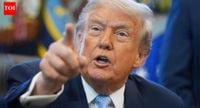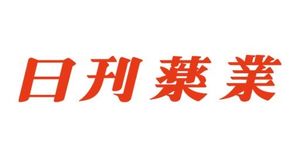Diplomatic maneuvering in East Asia reached a fever pitch this November, as the United States, China, and their regional partners navigated a web of trade deals, military posturing, and shifting alliances. The past several weeks have seen a flurry of high-level meetings, bold policy announcements, and pointed rhetoric—each underscoring the complex interplay of economic and security interests that define the region.
On November 17, 2025, China’s Premier Li Qiang met with Russian Prime Minister Mikhail Mishustin in Moscow, signaling Beijing’s intent to deepen cooperation with Moscow across energy, agriculture, and investment. According to Xinhua, Li welcomed increased agricultural and food imports from Russia, urging Moscow to create a friendlier environment for Chinese enterprises investing and operating in the country. Mishustin, for his part, described the two nations’ collaboration as “resilient to external challenges” and emphasized the “special, strategic importance” of energy ties, including oil, gas, coal, and nuclear sectors.
This reinforced the “no limits” strategic partnership declared by China and Russia in February 2022, just days before Russia’s invasion of Ukraine. Over the last decade, Chinese President Xi Jinping and Russian President Vladimir Putin have met more than 40 times, with their relationship only growing closer as both countries face mounting pressure from the United States and its allies. As Reuters noted, Russia has become a vital supplier of energy to China, particularly since the start of the war in Ukraine, while Beijing relies on stable imports to fuel its vast economy.
Meanwhile, Washington was making headlines of its own. On the same day as the Moscow talks, U.S. President Donald Trump addressed reporters with a notably hoarse voice, explaining he had “blown [his] stack” during heated trade and tariff discussions. “I feel great. I was shouting at people because they were stupid about something having to do with trade and a country, and I straightened it out, but I blew my stack at these people,” Trump said, as reported by Reuters. He declined to name the country in question, but the context was clear: trade tensions remain at the heart of the Trump administration’s economic agenda.
Trump’s second-term strategy has centered on broad import tariffs designed to boost domestic manufacturing. However, this approach faces a significant hurdle as the Supreme Court prepares to rule on the lawfulness of his use of emergency powers to impose those tariffs. Amid domestic concerns over rising costs, Trump recently exempted a broad range of agricultural products from reciprocal tariffs, including beef, coffee, chocolate, bananas, tomatoes, and oranges. The United States is currently engaged in trade talks with several countries, including China—where a one-year framework truce was reached on October 30, 2025—and a group of Southeast Asian and Latin American nations. India is also negotiating a trade pact with the U.S., having completed six rounds of talks. Despite 50 percent tariffs imposed by Trump in August, India’s exports to the U.S. rose by 14.5 percent in October compared to September, according to Global Trade and Research Initiative founder Ajay Srivastava. Commerce and Industry Minister Piyush Goyal suggested that a “fair, equitable and balanced” agreement may soon be within reach.
The U.S.-China trade relationship remains especially fraught. Both countries have taken steps to deescalate tensions since the October 30 meeting between Trump and Xi Jinping. The PRC Ministry of Commerce announced on November 7 the suspension of some export controls on rare earth minerals and lithium battery materials, first imposed in early October. Two days later, MOFCOM stated it would no longer limit exports of dual-use items—including gallium, germanium, and antimony—to the United States. By November 10, both sides had agreed to a one-year suspension of port fees for each other’s vessels and halted investigations into their respective shipping and shipbuilding sectors. The U.S. Department of Commerce also suspended an expansion of its entity list rule, signaling a willingness to cooperate on national security-related trade issues.
Yet, these economic overtures have not diminished the region’s underlying security tensions. In a historic move, Taiwanese Vice President Hsiao Bi-Khim addressed the Inter-Parliamentary Alliance on China (IPAC) in Brussels on November 7, marking Taiwan’s first participation as a full member of the international alliance. According to CNA, Hsiao called for increased cooperation and support for Taiwan, highlighting five lines of Chinese efforts to undermine Taiwanese sovereignty: military pressure, cyberattacks, economic statecraft, infrastructure sabotage, and influence campaigns. The Chinese Mission to the European Union condemned Hsiao’s address, declaring it “seriously undermines China’s core interests, seriously violates the one-China principle, seriously interferes in China’s internal affairs, and seriously erodes the political mutual trust between China and the EU.”
Japan, for its part, has taken a more assertive stance. On November 7, Prime Minister Sanae Takaichi indicated that Japan may mobilize its Self-Defense Forces if the PRC uses force against Taiwan, a statement that drew immediate condemnation from Beijing. PRC Consul General in Osaka Xue Jian responded with inflammatory rhetoric, warning he would “cut off the filthy necks” of those “who dare to arbitrarily intervene.” Takaichi later clarified that Japan would make a “comprehensive judgement” before taking any action, but her remarks marked the first public acknowledgment by a sitting Japanese prime minister of the possibility of employing the JSDF in response to a potential invasion of Taiwan.
Within Taiwan, political divisions over relations with China have sharpened. On November 8, Kuomintang (KMT) Chairwoman Cheng Li-wun attended a memorial for victims of Taiwan’s martial law period, an event that included tributes to executed CCP spies and participation from pro-unification groups. Cheng’s attendance, defended on grounds of freedom of speech, drew criticism from members of the ruling Democratic Progressive Party (DPP) and even some within her own party, who feared it signaled a willingness to seek closer engagement with Beijing. PRC state media highlighted Cheng’s comments at the memorial, in which she criticized the DPP for “resurfacing the specter of authoritarianism” in Taiwan. The CCP has frequently accused the DPP of perpetrating a “Green Terror” by allegedly suppressing political opponents and pro-unification voices.
Amid these political and economic crosscurrents, China has continued to flex its military muscle. The People’s Liberation Army Navy commissioned its third and most advanced aircraft carrier, the Type-003 Fujian, on November 7. According to the Chinese government, the Fujian will be based at the Southern Theater Command, enhancing China’s ability to project power across the Indo-Pacific and support potential operations around Taiwan. The ship’s advanced catapult-assisted take-off system and new airborne early warning capabilities mark a significant leap in Chinese naval power, as noted by analysts at the Center for Strategic and International Studies.
Finally, the PRC has sought to expand its influence in the Pacific, signing a new economic partnership framework agreement with five Pacific island states, including Nauru, Micronesia, Kiribati, Vanuatu, and Fiji. The agreement, described by Global Times as a shift toward a “long-term and institutionalized partnership,” aims to bolster trade, investment, and supply chain cooperation. Fiji, which has expressed concerns about growing Chinese influence, recently balanced its engagement with both China and Taiwan, reflecting the delicate diplomatic dance faced by many smaller states in the region.
As November draws to a close, the shifting alliances and strategic calculations in East Asia show no signs of slowing. From trade truce to military brinkmanship, the region’s major players are recalibrating their relationships, each seeking advantage in an increasingly complex and contested landscape.





